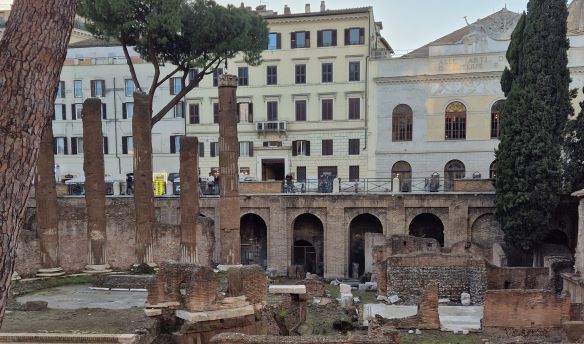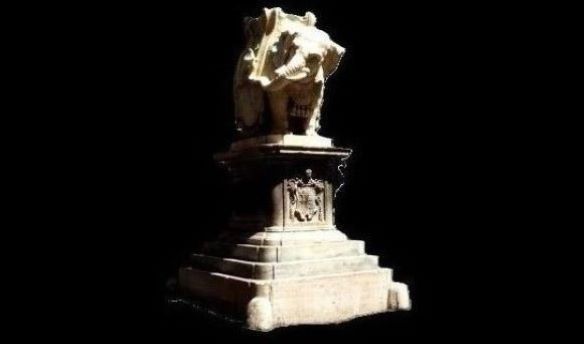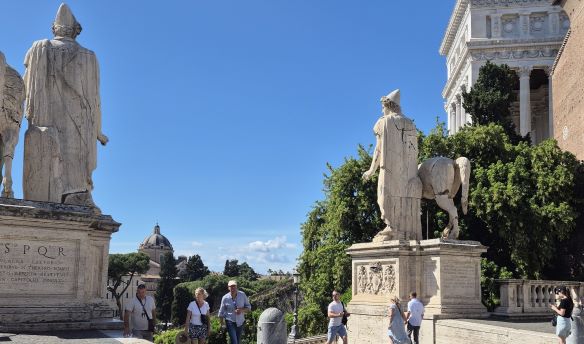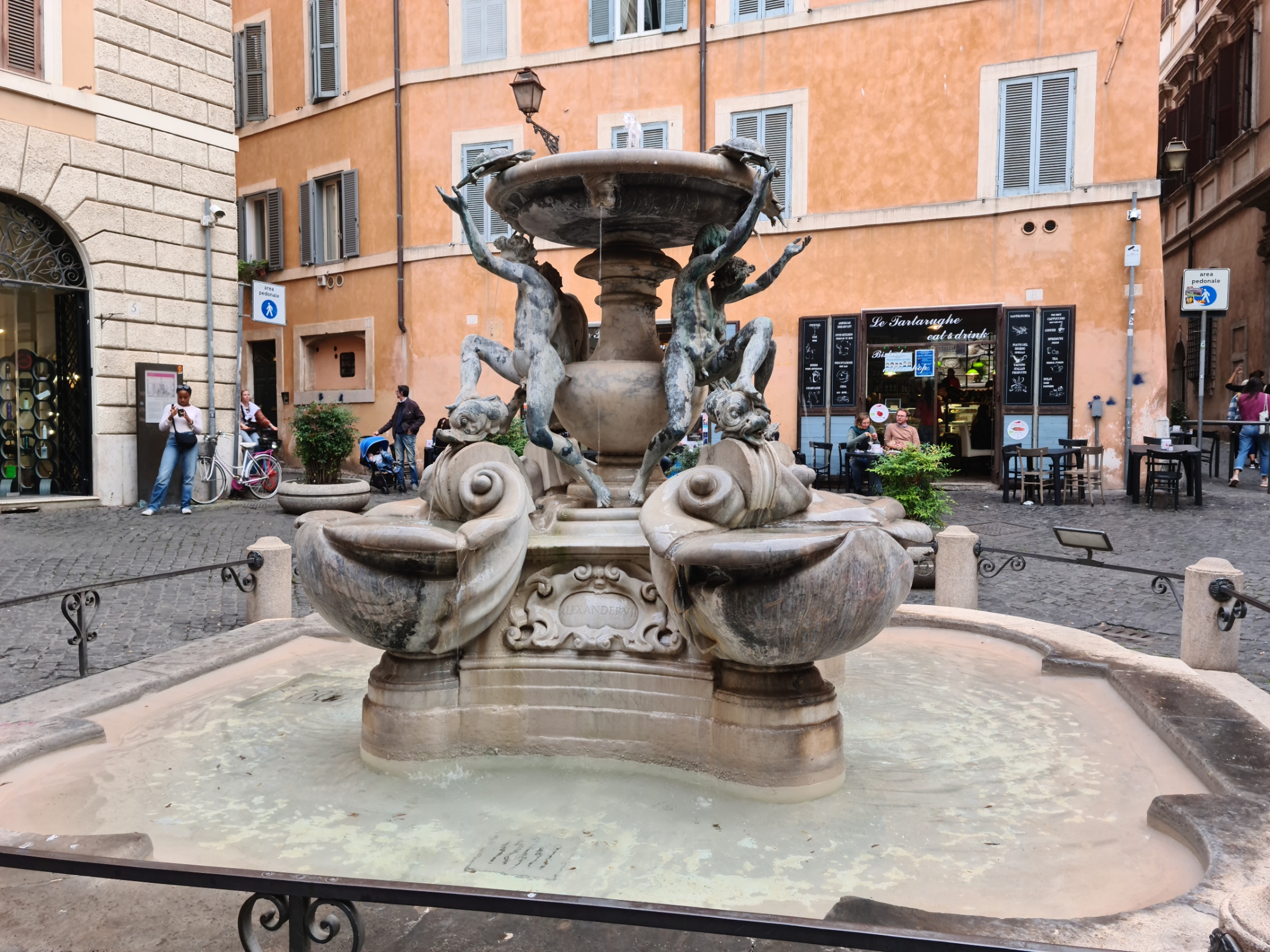
Piazza Mattei is quite small but it is home to a famous fountain and two noble palazzos.
The piazza is situated next to Rome’s historic Jewish ghetto but is not part of it.
Palazzo Giacomo Mattei occupies the northeast corner and was originally two buildings. There are two main entrances and, behind them, two courtyards in different styles.
It is the oldest Palazzo Mattei in the area but there are several others belonging to the family, to the north and east.
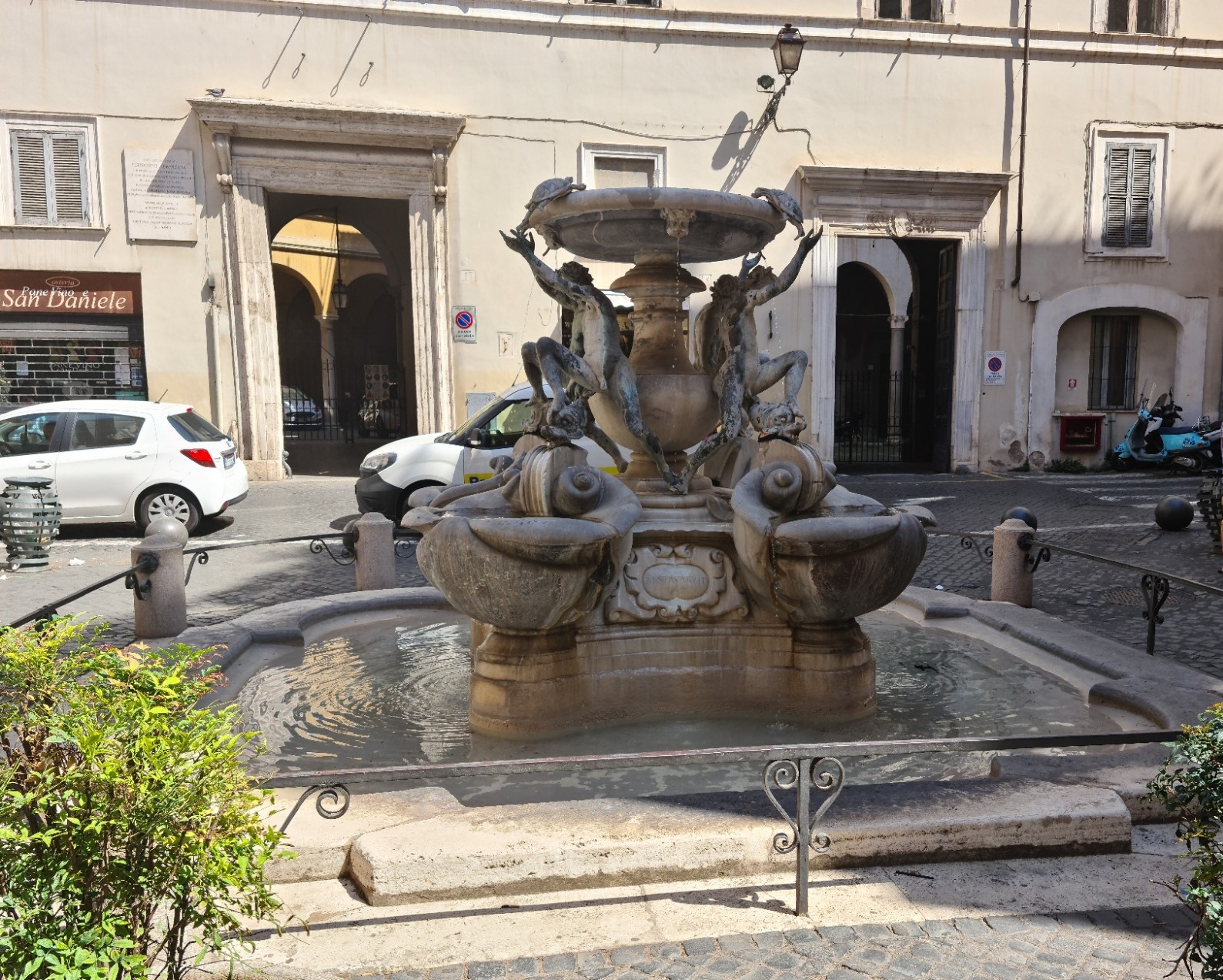
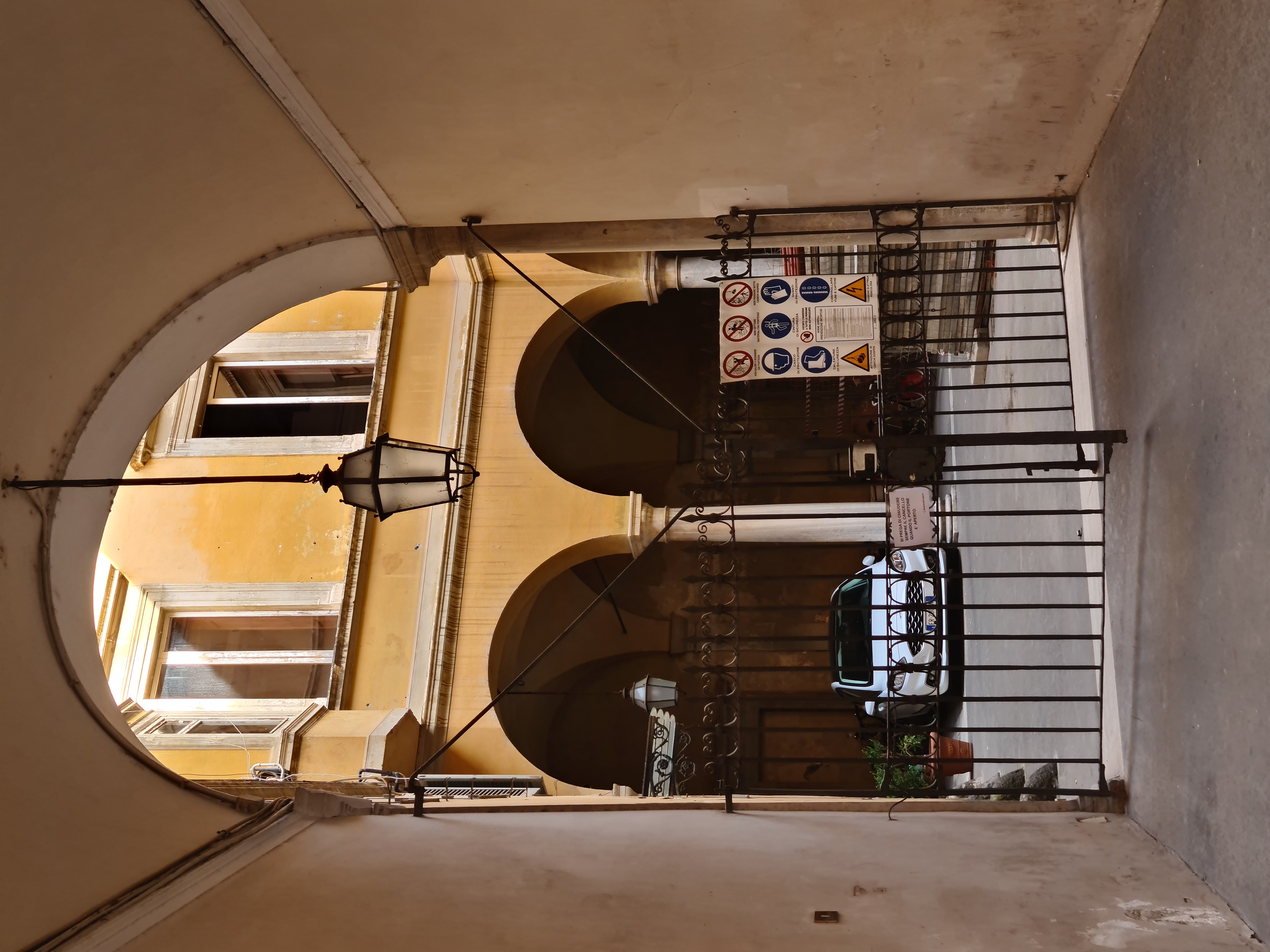
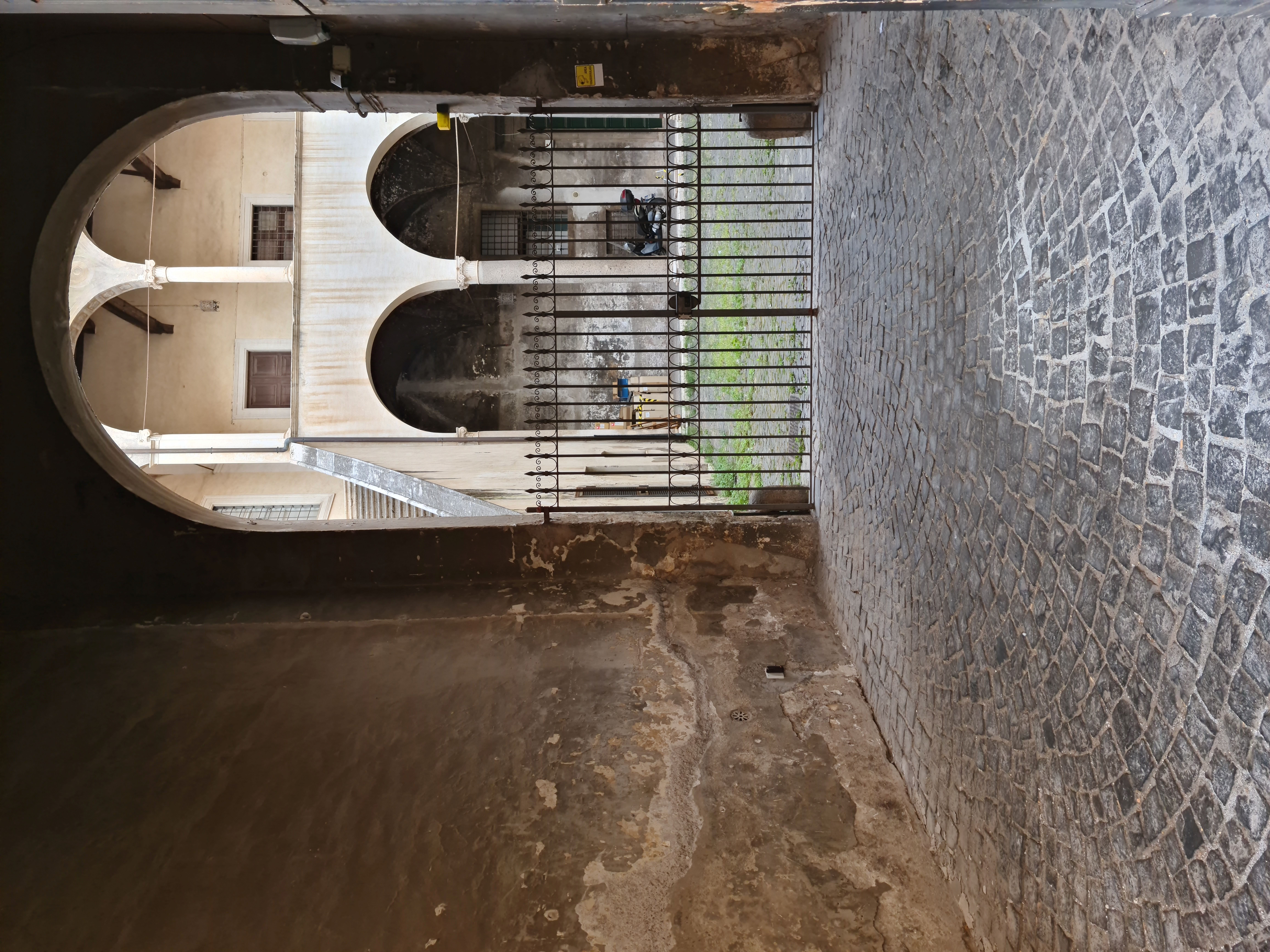
Palazzo Costaguti, the other palazzo, is in the corner on the opposite side of the piazza.
This palazzo was built at approximately the same time as Palazzo Giacomo Mattei.
The Costaguti family purchased it in 1642.
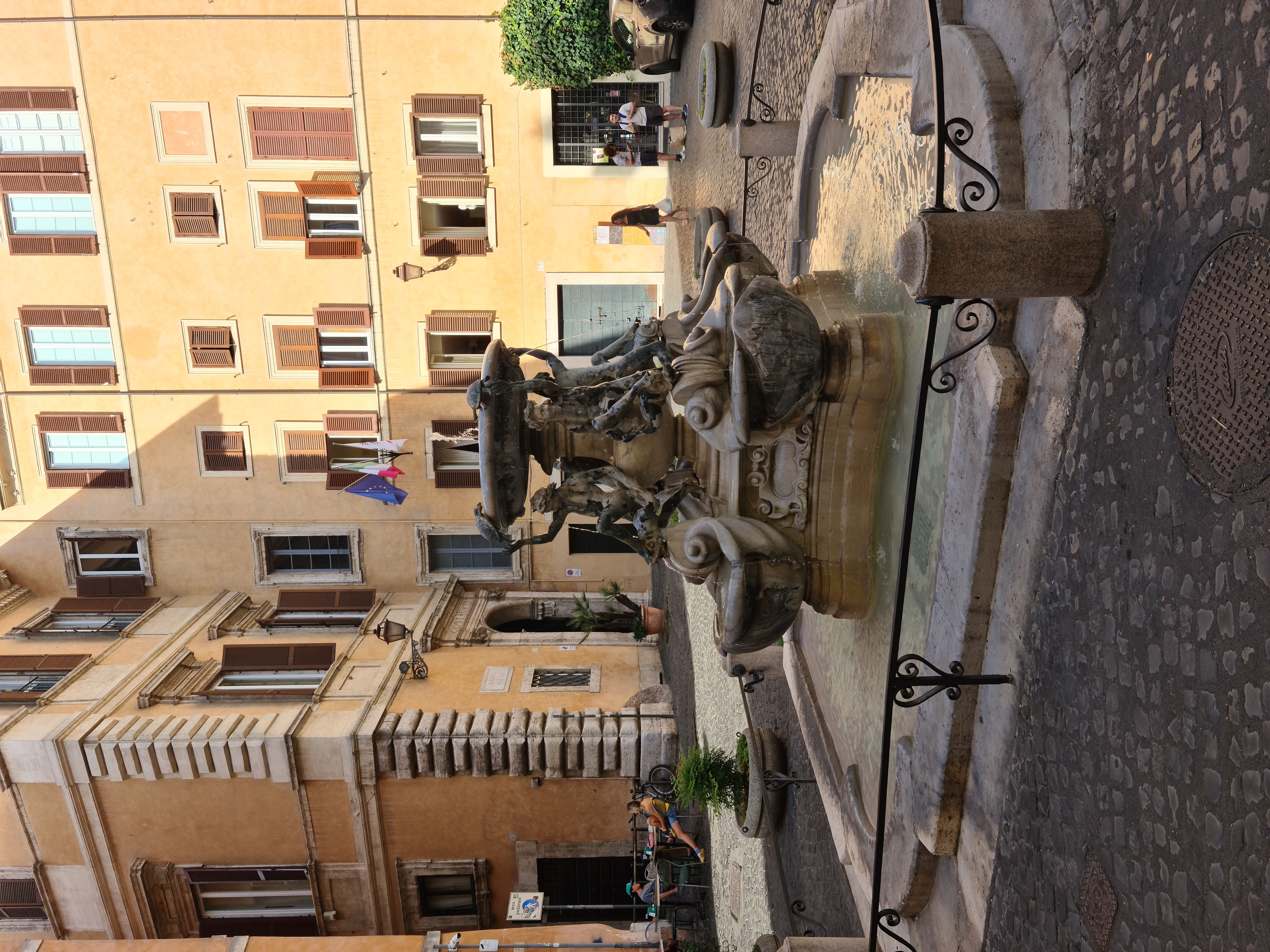
Palazzo Costaguti’s entrance opens onto Piazza Mattei but the palazzo also borders Via della Reginella, which is part of the Jewish ghetto.
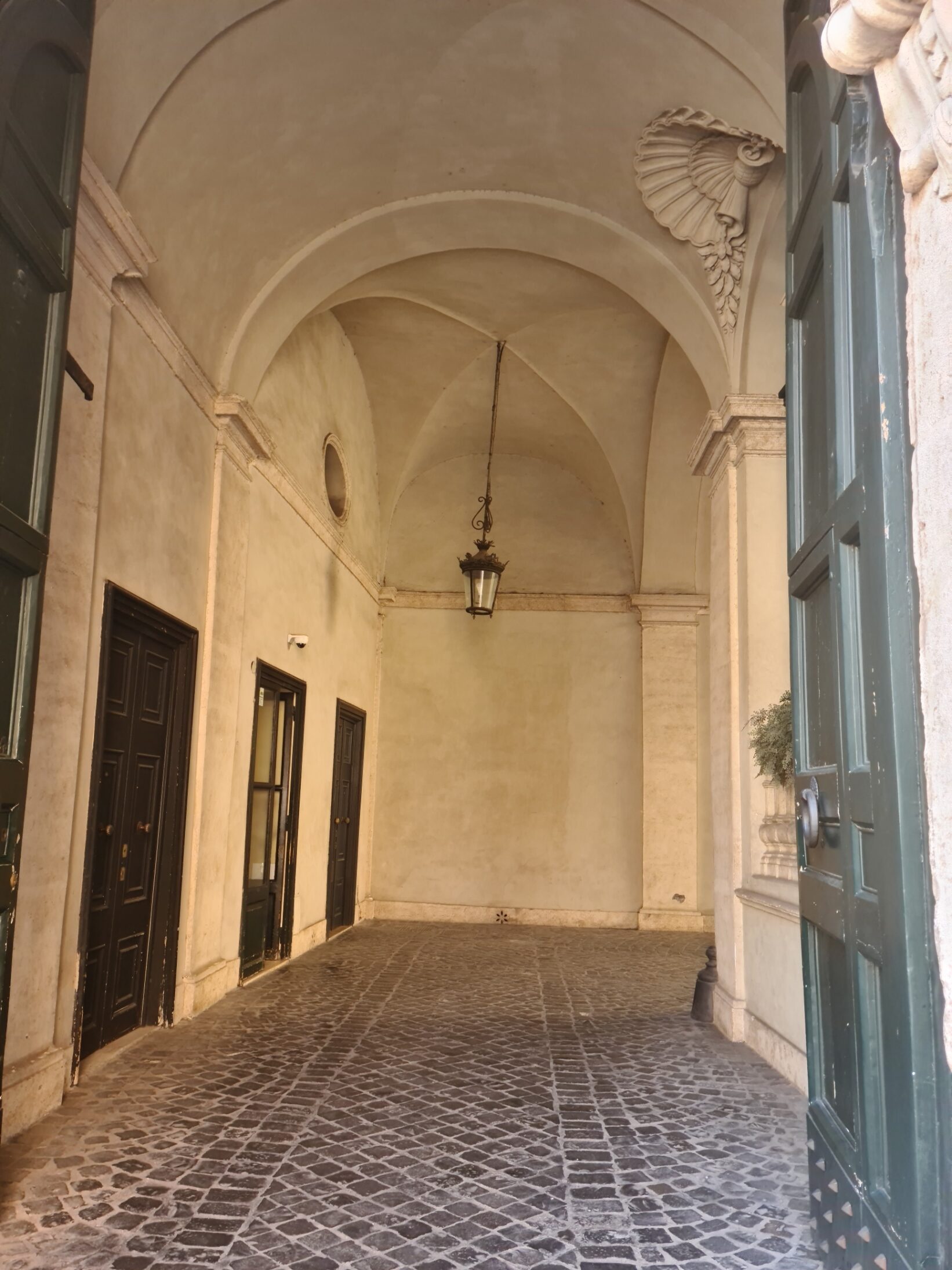
An Early Warning
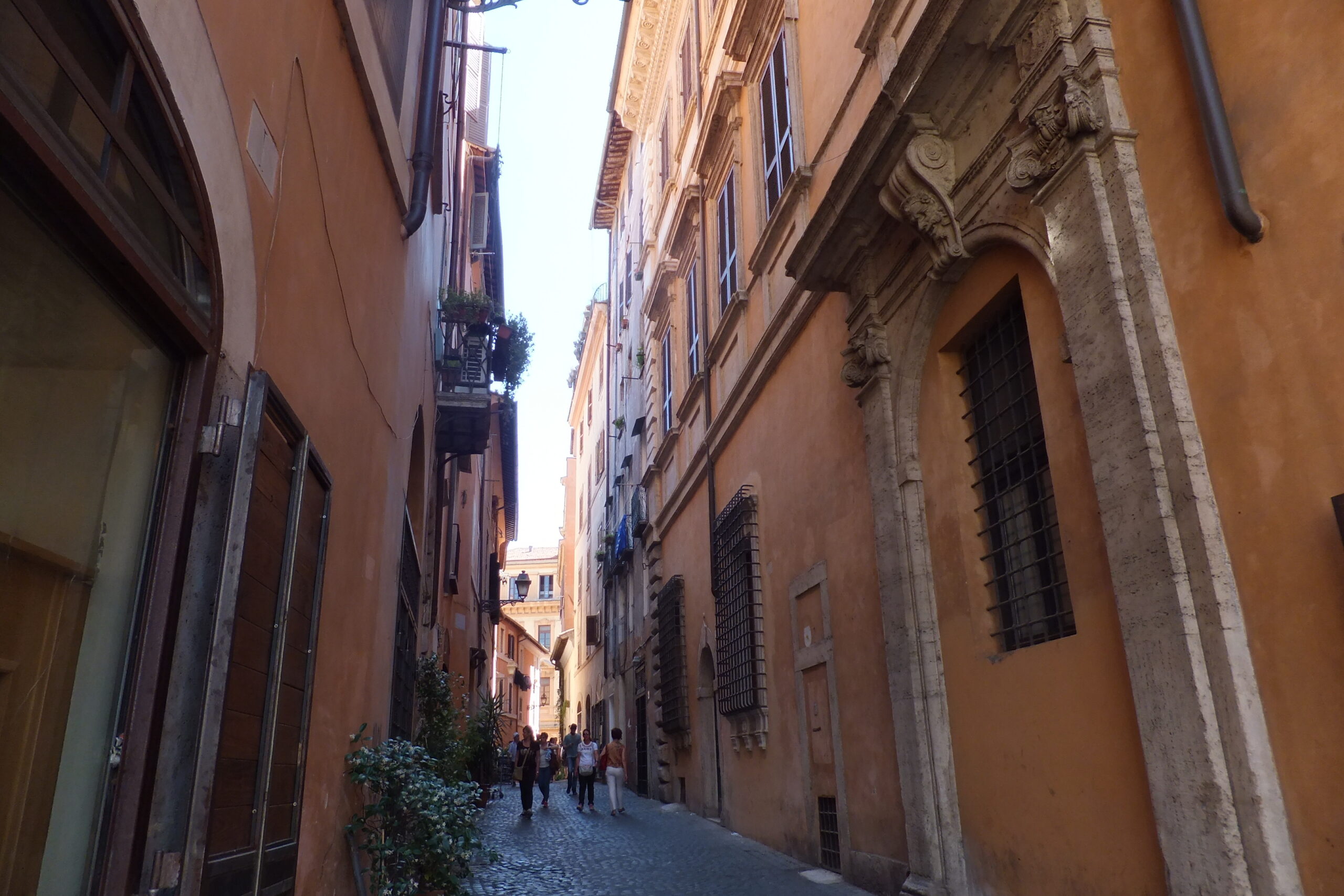
In 1943, twelve-year-old Elisa Pavoncello lived with her family in a ground floor apartment in Via della Reginella, opposite Palazzo Costaguti. In the photo, the palazzo is on the right.
On 16 October, Elisa was the first to wake and she wandered outside. The Costagutis’ doorman, a friend of Elisa’s family, saw her and made a sign to go back indoors.
The doorman had seen the first German troops entering the ghetto.
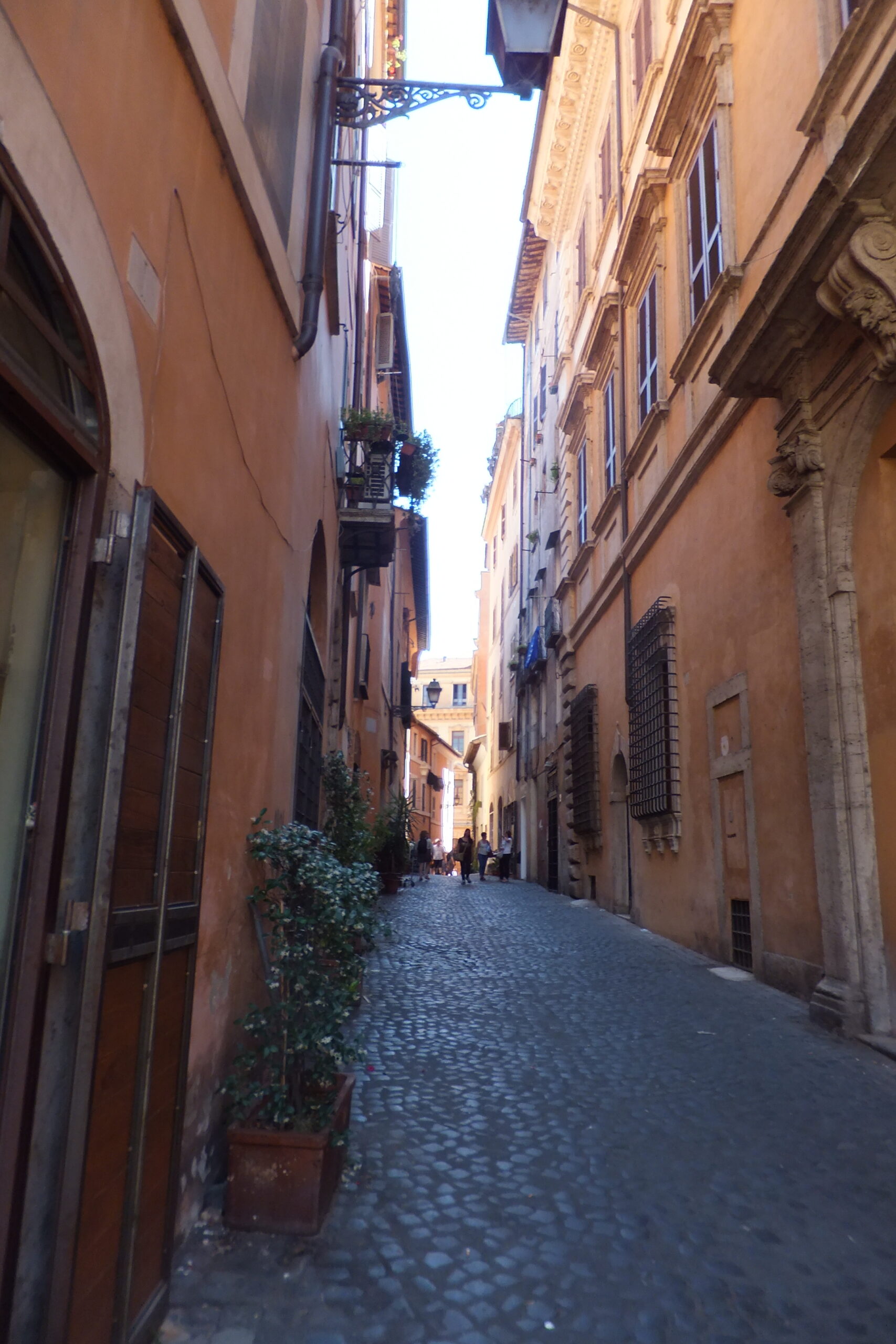
Elisa’s family, like many in the ghetto, had heard rumours. They feared that the Germans would take men from the ghetto for forced labour.
The family’s menfolk had gone into hiding the night before but the women and girls remained at home, believing that they were safe.
The doorman realised that the entire family was at risk and managed to let them know when the way was clear.
Elisa and her family hid elsewhere in Rome, initially with friends. In the second half of the occupation, they were given refuge by a religious order in the Istituto delle Pie Maestre Filippine, a short walk from Piazza Mattei.
Hidden Guests
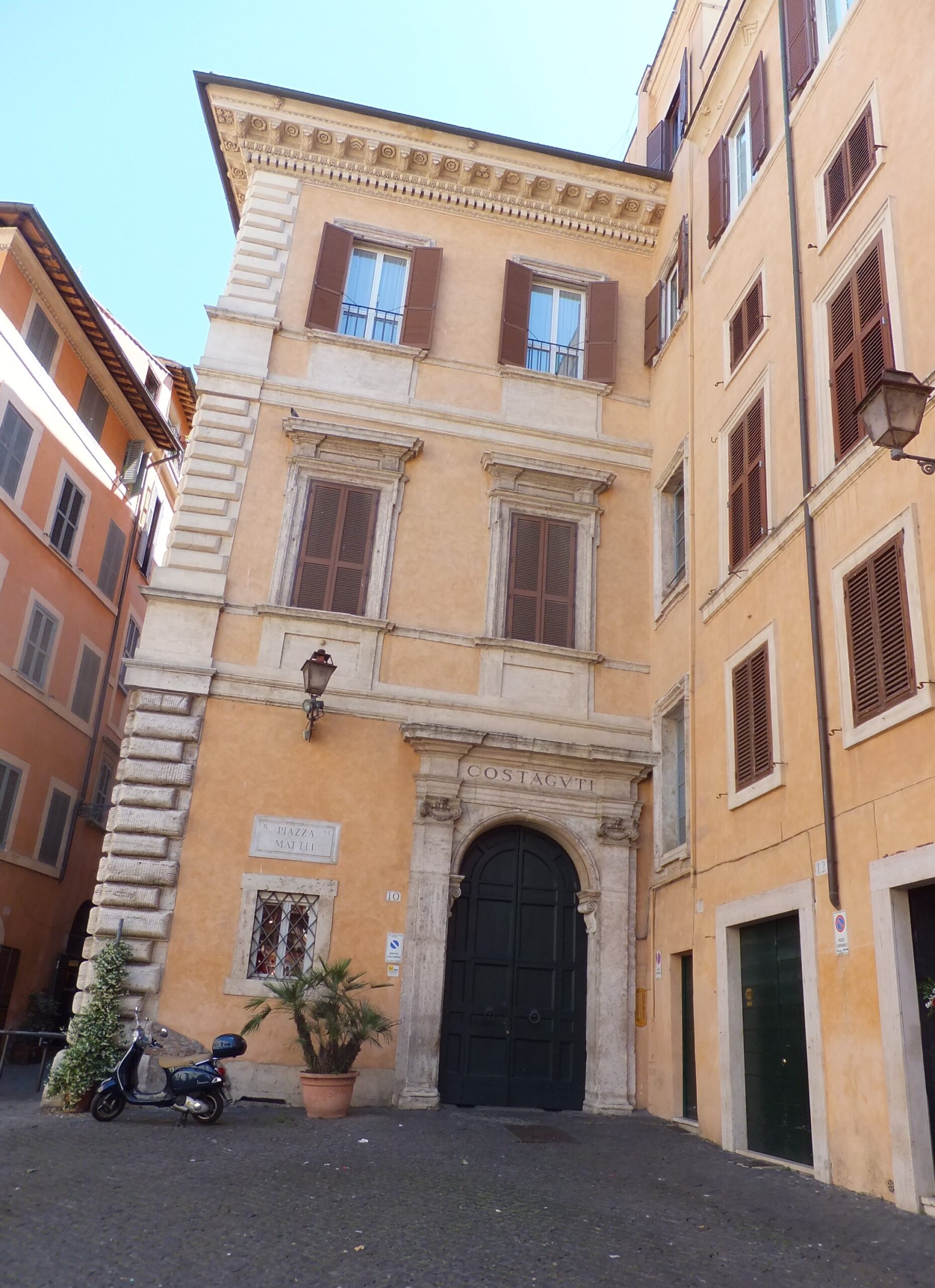
Marchesa Giulia and Marchese Achille Afan de Rivera Costaguti were the owners of Palazzo Costaguti.
The Marchese had been a prominent member of the Fascist party since the 1920s. As a fascist, he did not, at first, attract the Germans’ suspicion.
The Costagutis had no desire to collaborate with the Germans and were shocked when troops entered the ghetto to round up its inhabitants.
Because of the palazzo’s location, it was ideally-placed to house Jewish families fleeing the Germans.
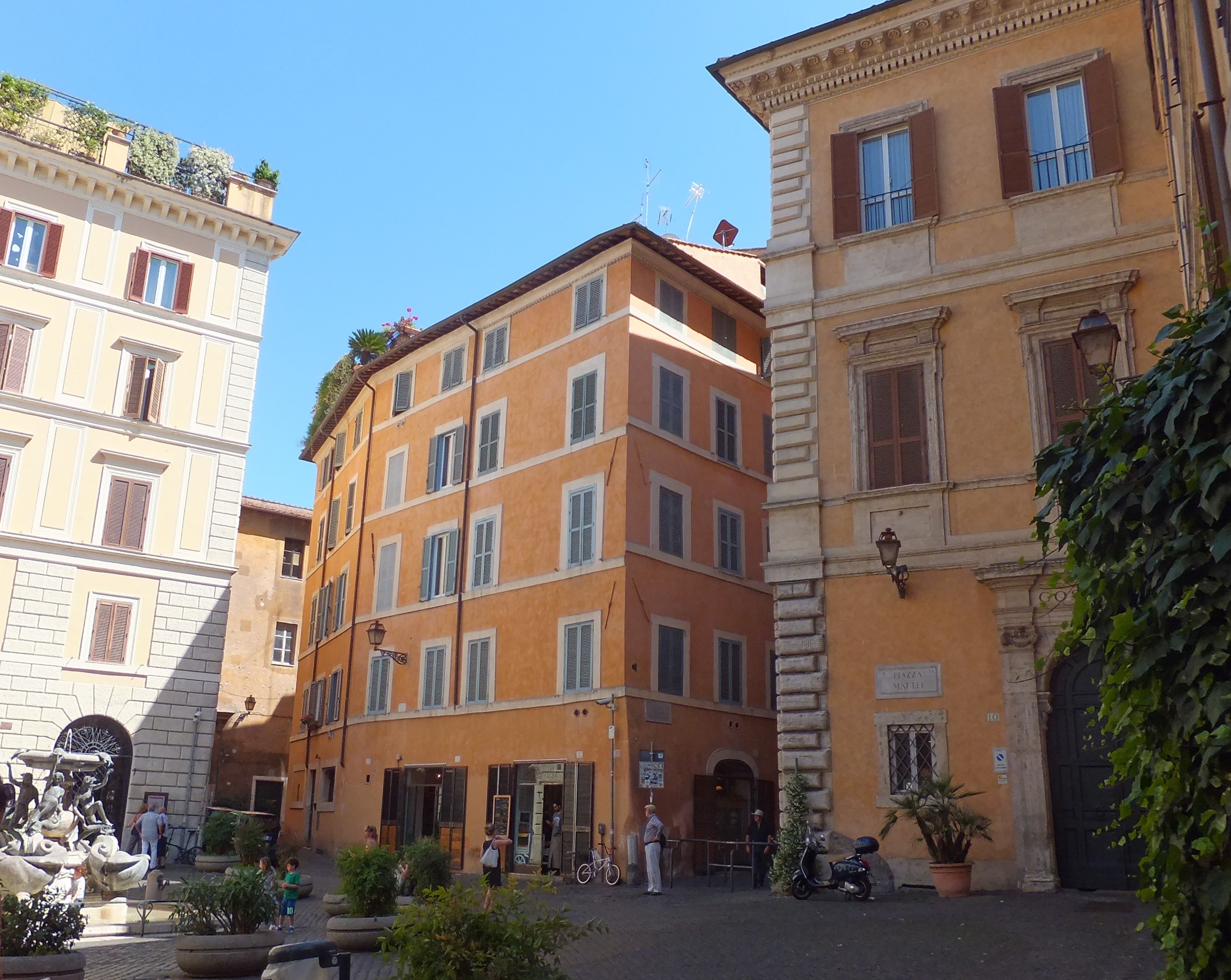
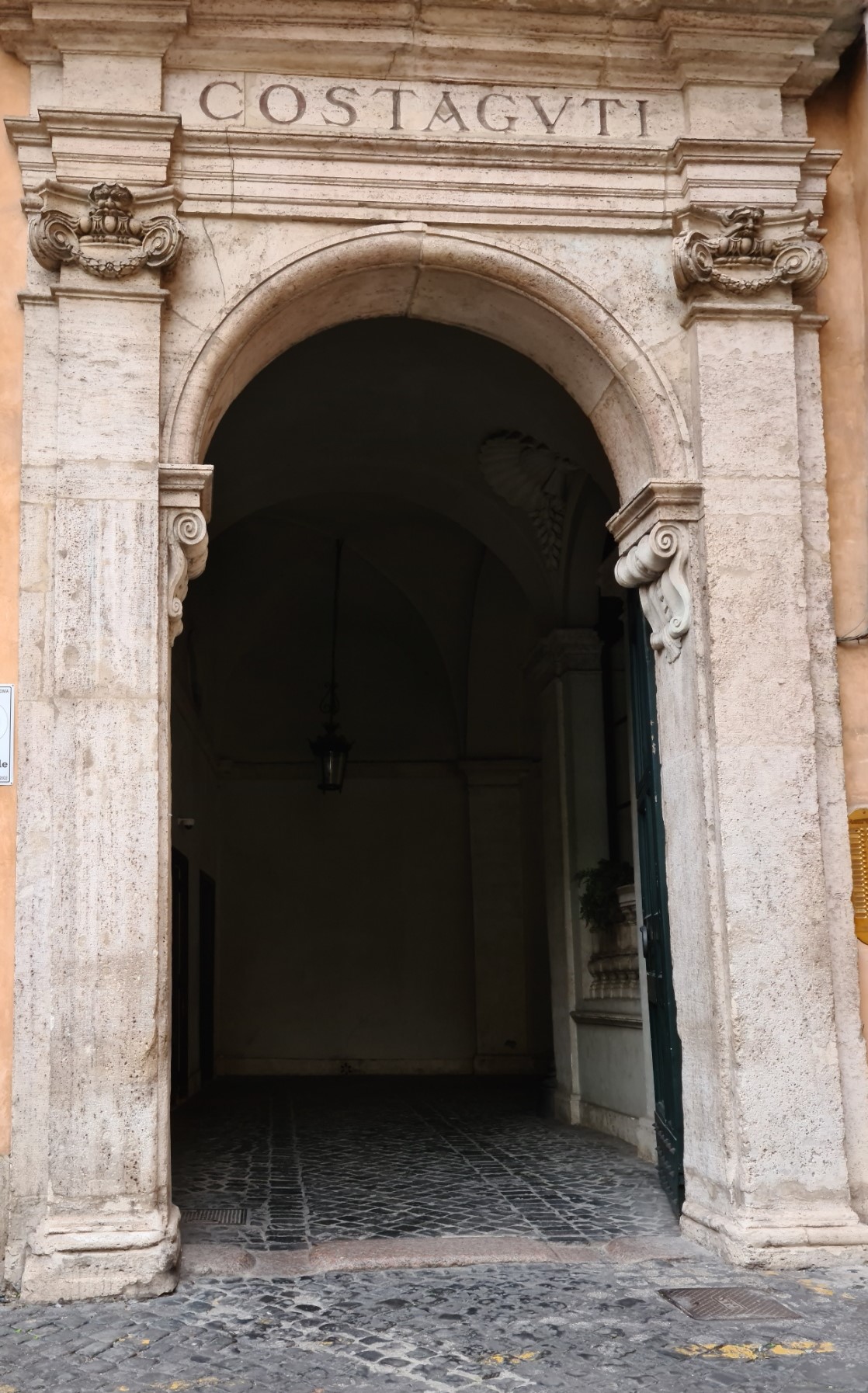
Many of the ghetto’s inhabitants were taken in by the Costagutis.
The palazzo gave refuge to around fifty people from sixteen families.
At first all was well, but the arrival of three Germans, hoping to make arrests, was a close call.
It was too dangerous for the guests to stay. The Costagutis rehoused them, initially with an employee and then with the Istituto delle Suore del Buon Pastore.
After the war, one of the Costagutis’ former guests recounted travelling back to Piazza Mattei to thank them. He was surprised when the Marchesa returned a small bag of jewellery that his family had left behind.
The Marchesa and Marchese were added to the list of the Just of Yad Vashem in 2002.
The Angel of Piazza Mattei
Visitors flock to Piazza Mattei to see its famous fountain.
The original fountain was designed by Giacomo Della Porta and created between 1581-84. The sea turtles clambering over the rim were designed by Bernini and added about seventy years later.
Each turtle is at a different angle, posing a challenge to artists and photographers alike.
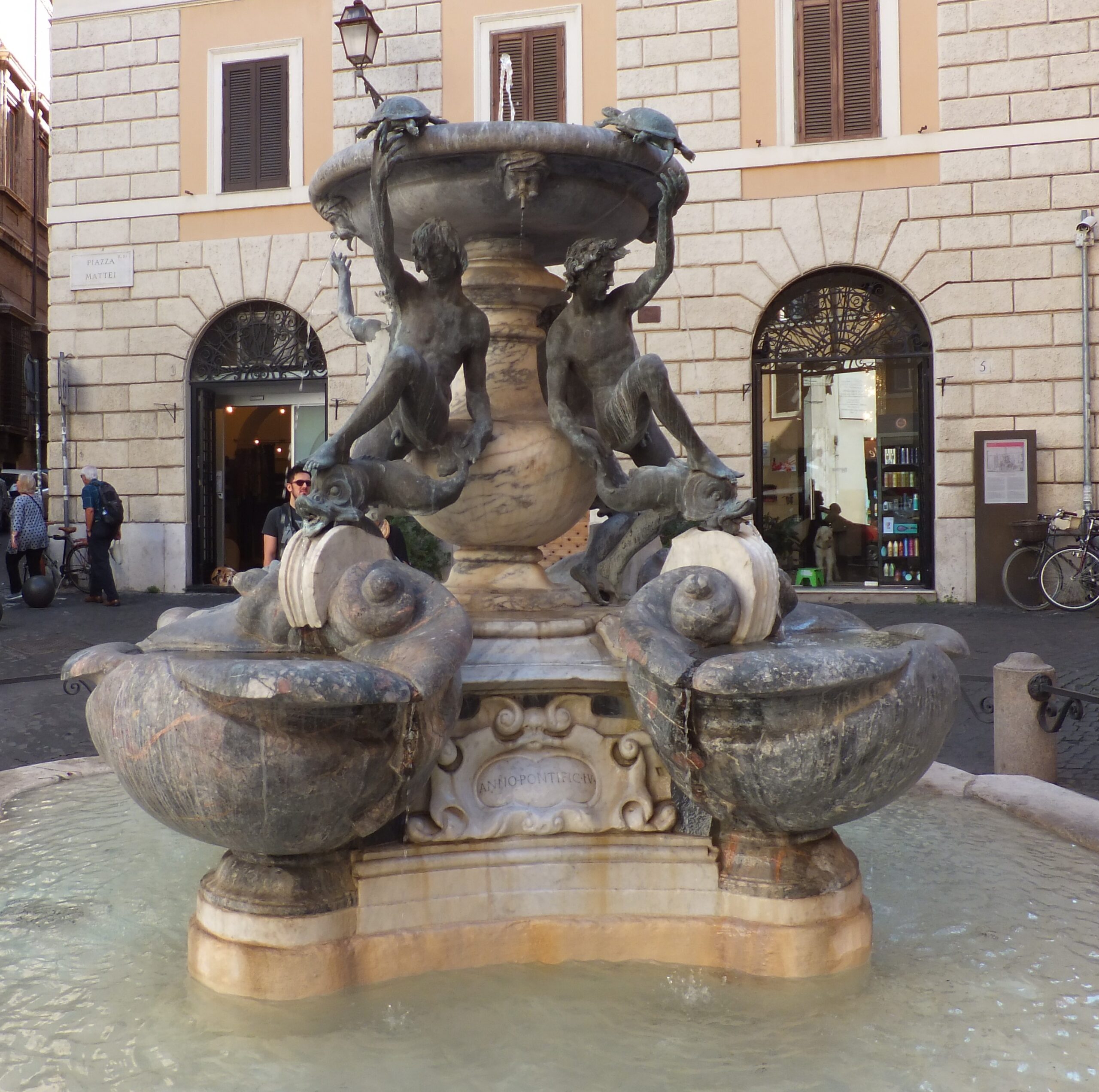
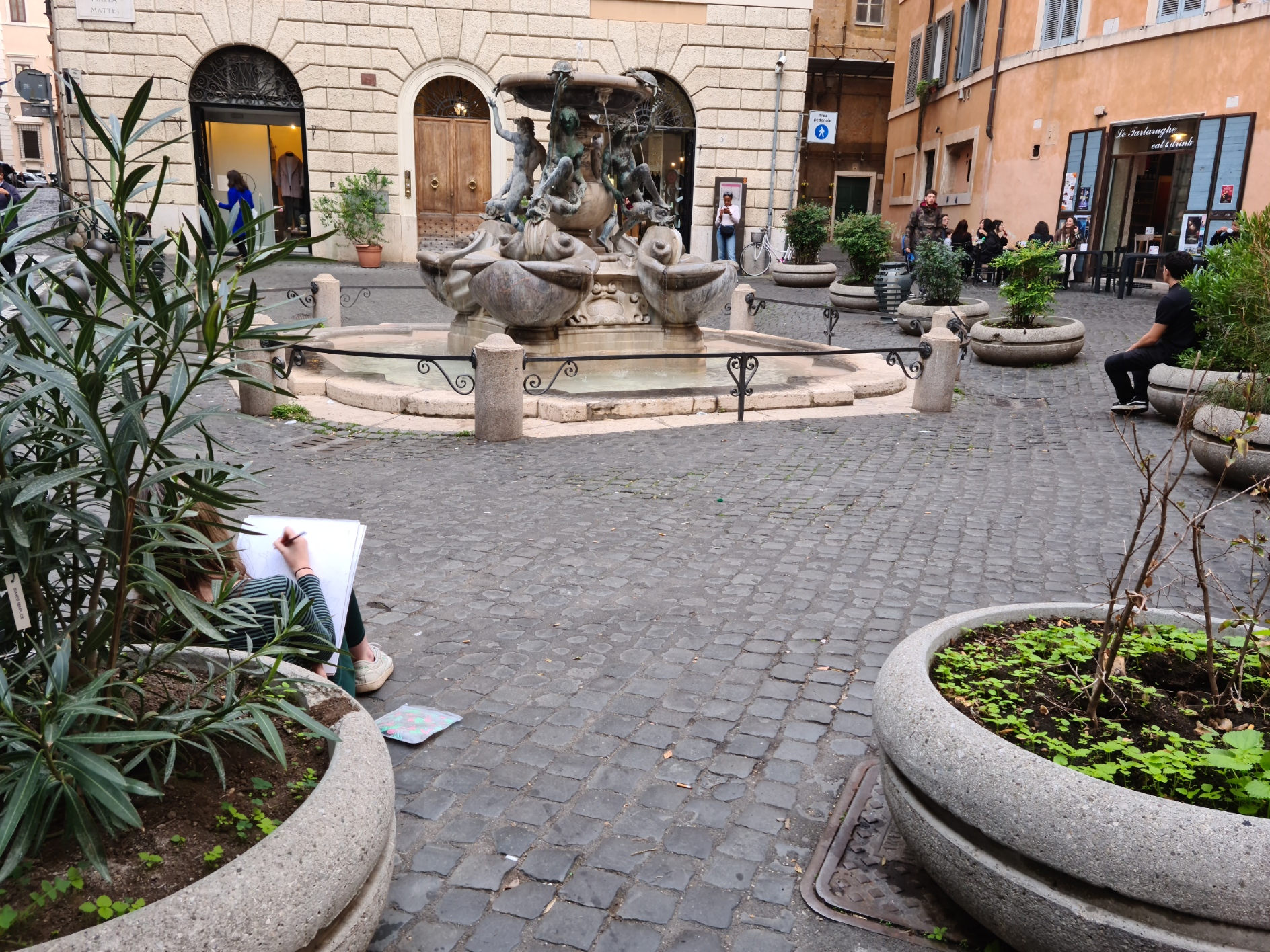
After Rome’s liberation, it was rumoured that an American general wanted to take the fountain to the USA.
Gaspare De Fiore was studying to be an architect. He drew well and his professors sent him to prepare a detailed drawing of the fountain. If the original was removed, they reasoned, Rome could at least commission a copy.
Angelo, Gaspare’s father, was an administrator at the police headquarters. He told Gaspare that he would collect him from Piazza Mattei on his way home from work.
Gaspare saw Angelo emerge from one of the small alleyways, wearing a cream-coloured coat and a wide-brimmed hat. He had a cigarette between his lips.
Gaspare was about to go to his father but a man appeared, shouting something in Hebrew. The man dropped to Angelo’s feet and hugged his legs.
Men and women appeared from the doorways of nearby shops and businesses.
In the end, Gaspare saw about ten people. They seemed excited and were talking loudly in Hebrew.
Then someone shouted in Italian:
“Our guardian angel has come back! We owe him our life!”
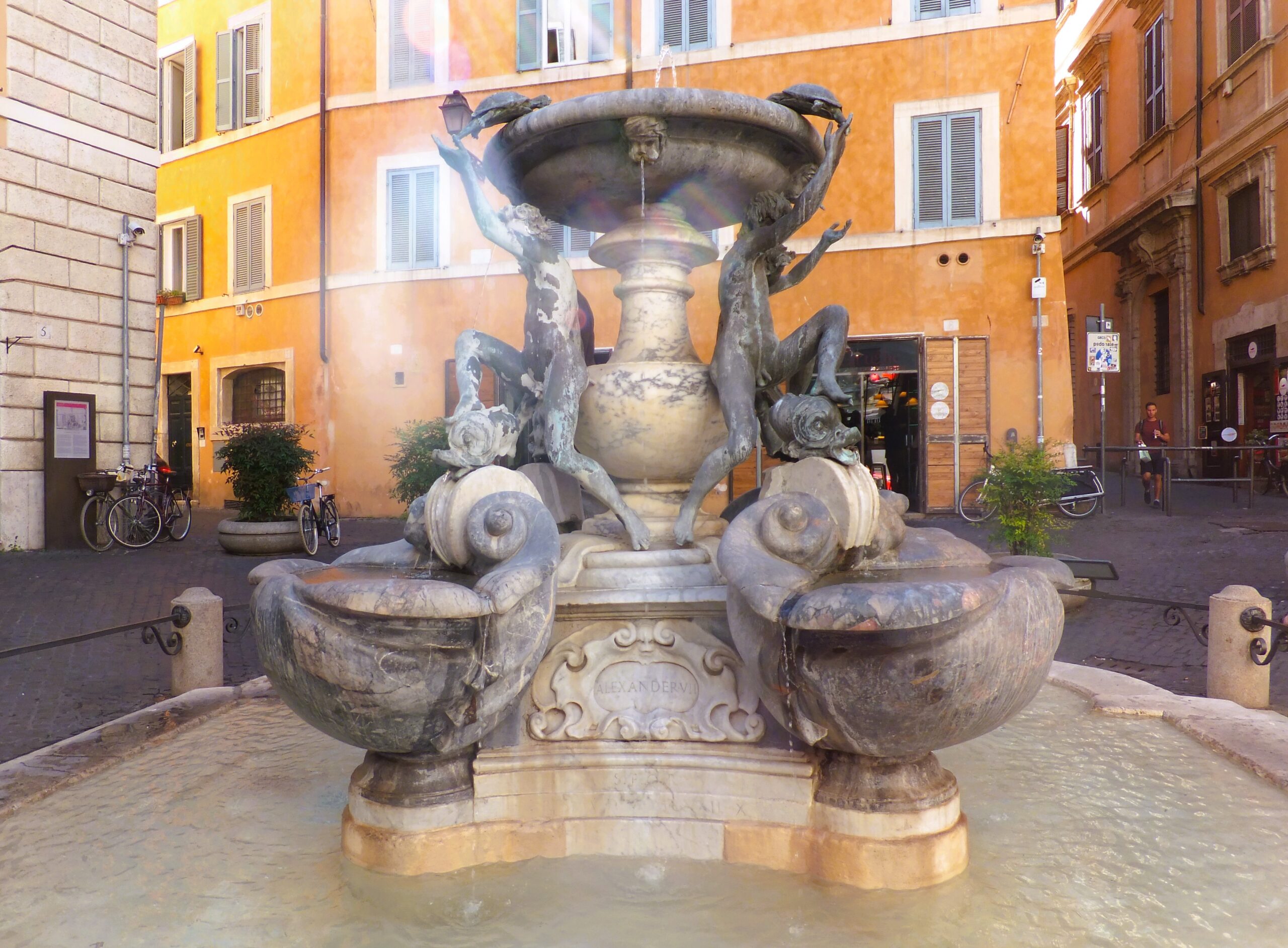
Angelo hated the persecution of the Jews.
Quietly but efficiently, he had created confusion in the police headquarters’ records, changing the names of foreign Jews and giving Italian Jews new identity documents. Their replacement identities were often those of non-Jewish Italians, seeking refuge from Italy’s former African colonies.
Angelo was one of the first Italians to be inscribed amongst the Just of Yad Vashem in 1966.


